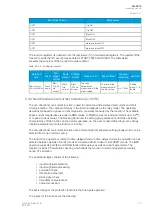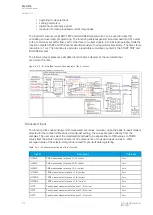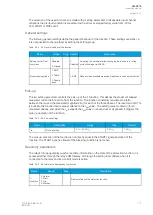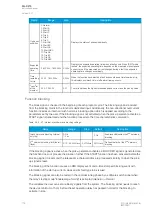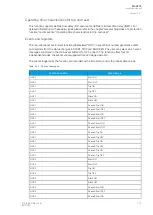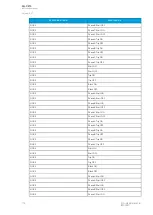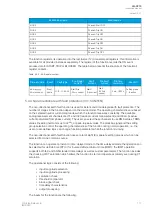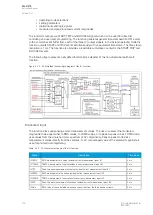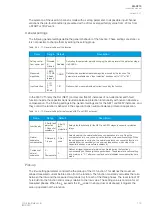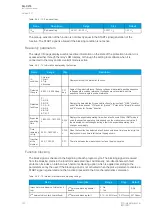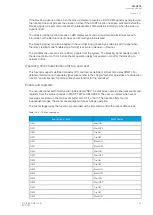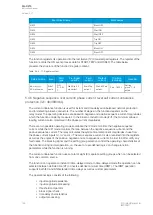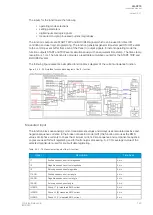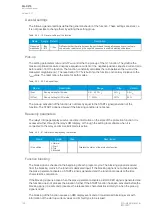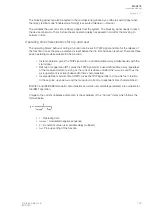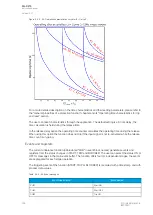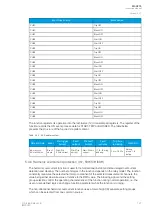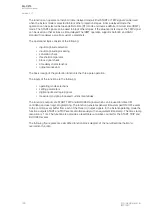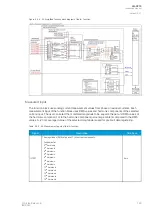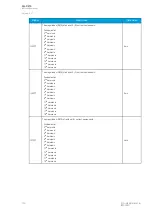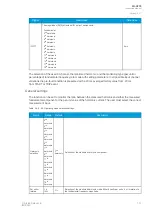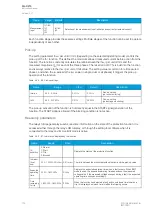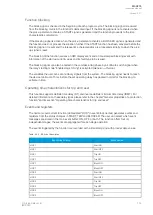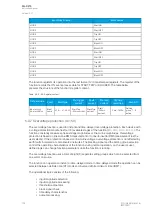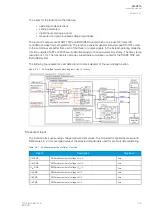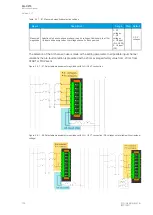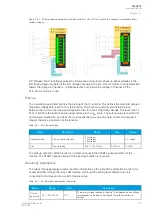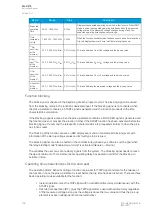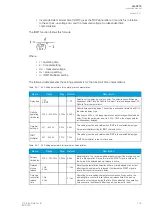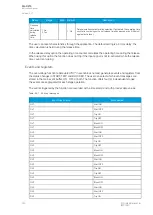
The blocking signal can also be tested in the commissioning phase by a software switch signal when
the relay's testing mode "Enable stage forcing" is activated (
General
→
Device).
The variables the user can set are binary signals from the system. The blocking signal needs to reach
the device minimum of 5 ms before the set operating delay has passed in order for the blocking to
activate in time.
Operating time characteristics for trip and reset
The operating timers’ behavior during a function can be set for TRIP signal and also for the release of
the function in case the pick-up element is reset before the trip time has been reached. There are three
basic operating modes available for the function:
• Instant operation: gives the TRIP signal with no additional time delay simultaneously with the
start signal.
• Definite time operation (DT): gives the TRIP signal after a user-defined time delay regardless
of the measured current as long as the current is above or below the
i
set
value and thus the
pick-up element is active (independent time characteristics).
• Inverse definite minimum time (IDMT): gives the TRIP signal after a time which is in relation
to the set pick-up value
I
set
and the measured current
I
m
(dependent time characteristics).
Both IEC and IEEE/ANSI standard characteristics as well as user settable parameters are available for
the IDMT operation.
Unique to the current unbalance protection is the availability of the “Curve2” delay which follows the
formula below:
•
t = Operating time
•
I
2meas
= Calculated negative sequence
•
k = Constant k value (user settable delay multiplier)
•
I
set
= Pick-up setting of the function
A
AQ
Q-C215
-C215
Instruction manual
Version: 2.07
© Arcteq Relays Ltd
IM00040
125

